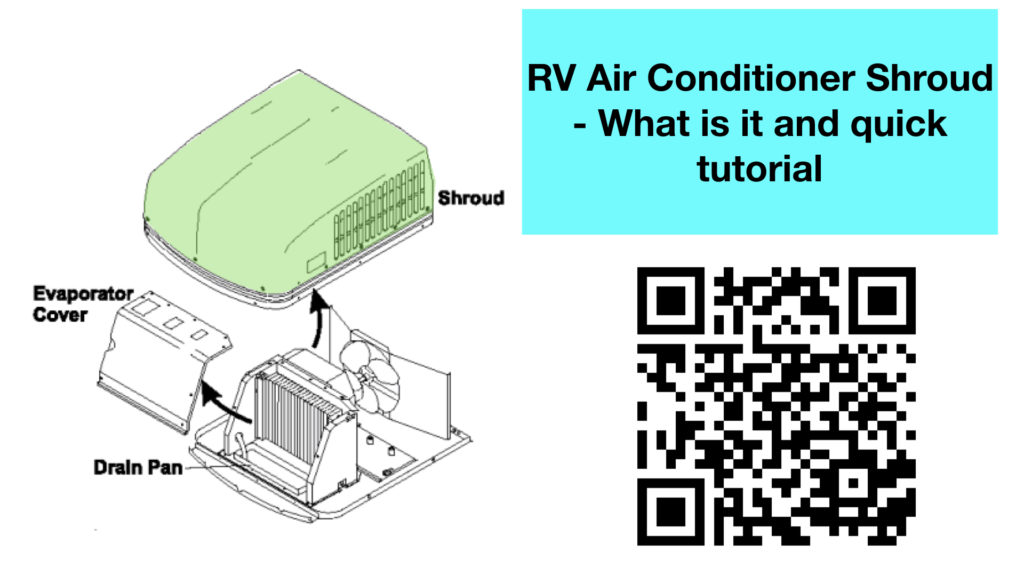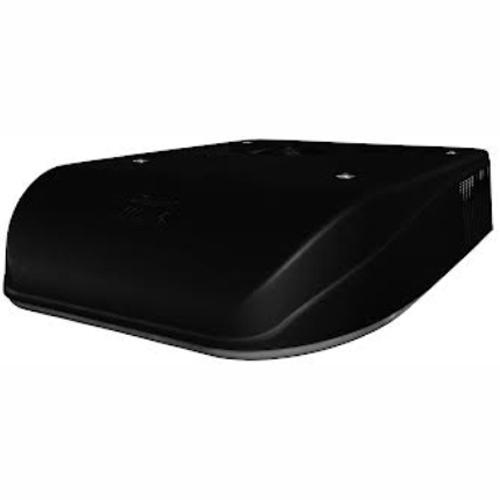The RV air conditioner shroud: What is it and what should I consider if I need a new one?
What could be my first indications my shroud is failing or has failed?
On your last long trip, did you hear a “bump” in the roof when you were driving? Did Les Nessman drop a frozen turkey on your roof? Did you swipe a branch and get a stare from your “special better half” passenger?
Have you ever felt that your AC is not cooling the place as it used to a few months back? Do you feel your AC is not functioning efficiently?
If you experience the above, check the electrical circuit. There might be disturbances in power too, which result in ACs not being able to cool the place effectively.
Even if you fix these problems, do they recur? Does it seem like you see water leaking or dripping when it rains?
All of these could be quiet signals that you have a hole, crack or imperfection in your RV ac shroud.
One good maintenance recommendation would be to check one a year or even after a long trip or violet storm to just make sure the shroud is ok
What is an rv air conditioner shroud?
An RV air conditioner shroud protects your air conditioner from external elements such as trees, buildings, hail, snow and rain. An RV air conditioners shroud is a very durable plastic, fiberglass, or ABS cover that goes over the top of the components of your air conditioner.
The shroud is also an integral part of the integrity of your air conditioner. It is not an OPTIONAL component, but is it one that will take abuse and will likely need replacing once or twice in your RVs lifespan.
What are the causes of RV AC shroud failures?
The major items that will cause you to replace your AC shroud are:
- Low bridges – you’ll be lucky if you ONLY have to replace the shroud
- Trees and tree limbs – you’ll be lucky if you don’t damage your AC, but in the case of trees, you might be lucky enough to be going slow and smart enough to stop immediately when you hear a crunch.
- Sun damage – In the Texas sun, the plastic on the the shrouds will eventually become brittle. This is likely due to the exposure to ultra-violet (UV) rays.
- Hail damage – Always a possibility – especially if the shroud is sun weakened and the hail pounds on a compromised plastic.
Check out the illustration in the picture above. I highlighted the shroud so you can clearly see what it is.
An RV air conditioner without a protective shroud is a no-go. You would never travel this way or store your RV this way.
Driving with an compromised shroud might mean that NEXT TIME you get a heavy rain, you’ll be replacing the entire RV ac unit. Yikes! Or worse, you’ll get rain in your RV, in your ceiling interior, and be in for a very expensive repair.
Furthermore, just to hammer away at the point, ACs are expensive, it is of utmost significance that you secure them from contaminants, debris and harsh weather with a good shroud. A $150 shroud giving its life to the Oak branch is much cheaper than a $1000 complete unit!
While choosing an RV air conditioner shroud, some research is required. You need to understand what to look for when buying the product and look for some genuine compatibility information. Every AC manufacturer has a different size, shape and fittings. Check and double check.
This is important – Your shroud should probably be ordered as an exact replacement from the manufacturer *OR* your replacement should say it is an exact replacement for a Penguin II (for example). These are not interchangeable with other RV ac.
I’ve made a camper air conditioner selection guide and I’ll be improving it constantly.
Want to make the best choice but have no idea how to go about it? Here is a list of considerations.
Check for the following information while purchasing an RV air conditioner shroud:
- Does it fit my air conditioner? This is probably the most important consideration! Don’t get cute – just buy a shroud that is an exact replacement.
- Is it made by the AC manufacturer or an aftermarket replacement part manufacturer.
Look for information on the ‘How To’ section on how to install an RV air conditioner shroud or how to replace an RV air conditioner shroud.
Listing of RV AC shrouds
12 Search Results for RV shroud
Search Results
Need Help?
 24/7 Help
24/7 Help







Leave a Reply